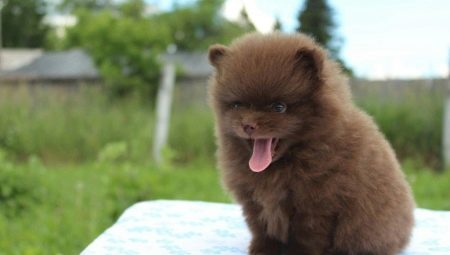Subspecies of the breed Spitz, as well as their colors, are very diverse. One of the most beautiful among small species is chocolate spitz.
How to determine the color of a puppy
The most basic color of the chocolate spitz breed, of course, is brown. Such dogs are considered very rare among representatives of their breed. Of course, choosing a puppy, you will not recognize its final, “adult” color, because after molting they change color.
However, you can determine the shade that the dog will receive by the color of the coat on the back of the ear. This method does not guarantee one hundred percent probability, but in most cases it can work. Brown Spitz should look at his lips and nose - they should also be brown in color and never darken to black.
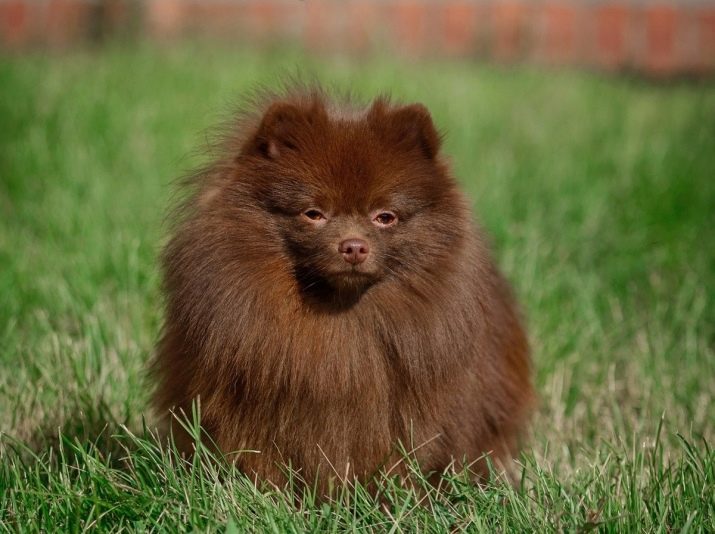
The brown variety of Spitz assumes coloring in different shades of chocolate, but the wool should retain its uniform tone.
As puppies, brown spitz dogs look much lighter and may also have spots.. You can see the color that will be as close as possible to the color of an adult individual only after molting, which begins at 3 months after birth, and ends around the 8th month.
The most saturated, bright and brilliant color of the hair of the Spitz acquires only by the 3rd year of life. If you want to get a brown spitz and no other, then look carefully at the dog’s pedigree: both of his parents should also belong to brown Spitz and not have spots, splashes and other drawings of other colors!
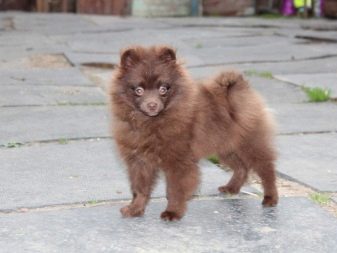

Varieties
Spitz pure brown without extraneous tones in color - a rarity. But in the process of selection, other variants of chocolate coloring were also developed, which also received recognition.
- Marble (chocolate merle). With this color, the Spitz retains the overall brown gamut, but individual areas on its fur are painted not with one, but with several shades of brown, both lighter and darker than the base color.
- Chocolate tan. Representatives of this type have tan marks on the cheeks, on the sides of the muzzle, above the eyes (you can get unique eyebrows), the inside of the ears, on the legs and under the tail. A tan may be present, including on the chest, but its presence is optional. Tanning should occupy no more than 10 percent of the total area of brown color.
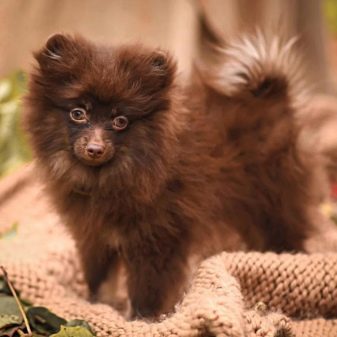
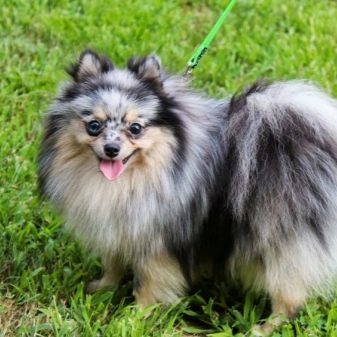
Particular colors are considered the next color variations - the presence in the color of two or more colors (for example, bicolor, tricolor and so on). In some classifications, chocolate-tan also applies to particolors. The number of variants of particolors in Spitz is huge, but the most popular are chocolate-white and brown-sable-white.
- Chocolate White Particolor - This is a puppy of white-brown color, having white spots on the chest, hips and paws. Spots are allowed in any size and shape. Perhaps the presence of a white groove on the head. Animals of this color will never succeed in producing puppies of pure brown or white colors.
- Brown-sable-white partikolor. Roughly speaking, this color can be called simply gray-brown. This is a three-color color, in which half of the coat (about 50 percent) is dyed white. Other colors - brown and sable - can both divide the remaining area of the overcoat and be present in very small quantities. The only important thing is the presence of three colors. However, the most undesirable place for interspersing is the paws of a dog.

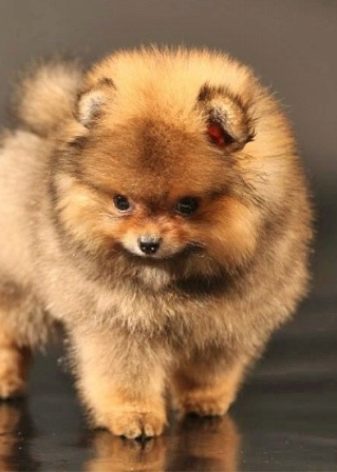
Character
These animals are very smart and smart and quickly understand how to manipulate the owner. Do not allow this - be restrained and sometimes moderately strict to your pet. But at the same time, Spitzs are very fond of their master and always try to cheer up and cheer. They are very easily trained and unpretentious in maintenance, but do not forget about daily hygiene procedures such as brushing your teeth and monitoring the condition of your ears and eyes. Spitz are very energetic and love active walks - Before purchasing a puppy, be sure to find a place where the pet will be able to run into it.
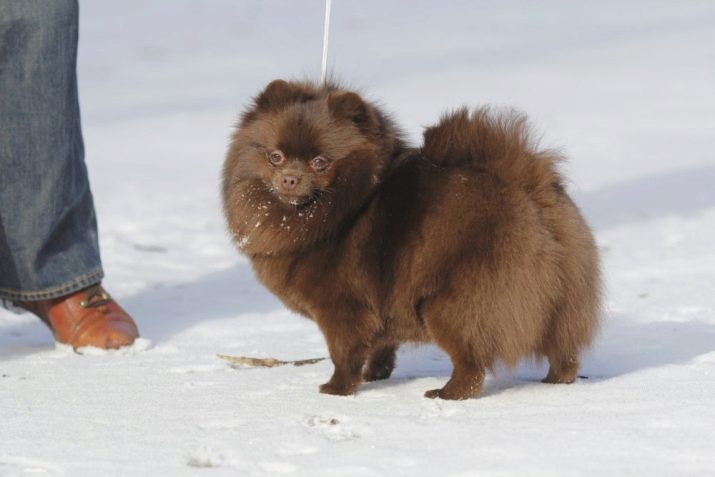
Such dogs are very sociable and, despite the frequent and loud barking, very friendly. They are cheerful and cheerful, very courageous and devoted, real faithful comrades. They easily make contact with other animals, like to play and have fun.
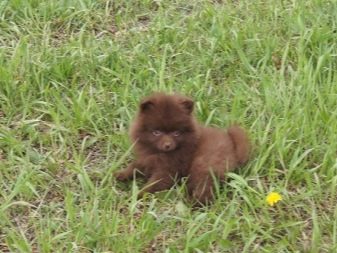
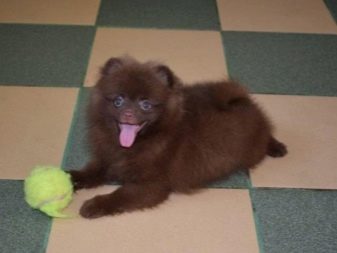
They obey their master, but sometimes they can be wayward, however, this largely depends on the upbringing of the dog.
About how the Spitz grows and develops, see the following video.
